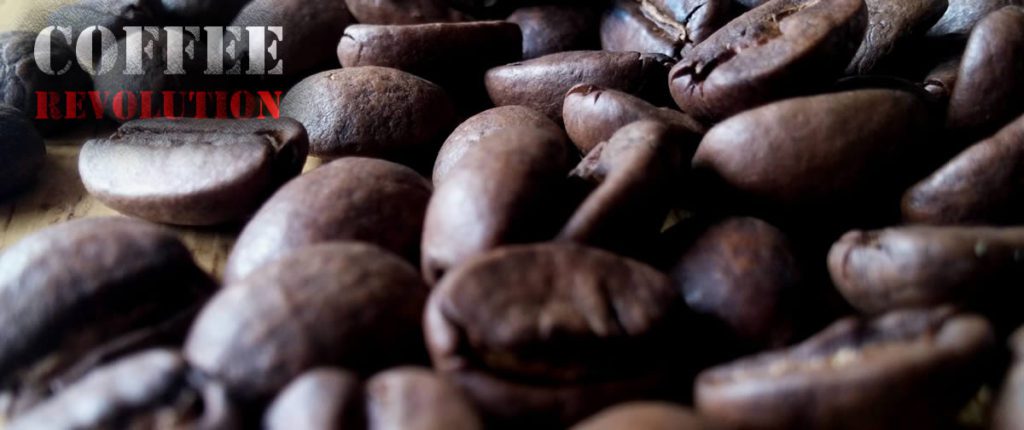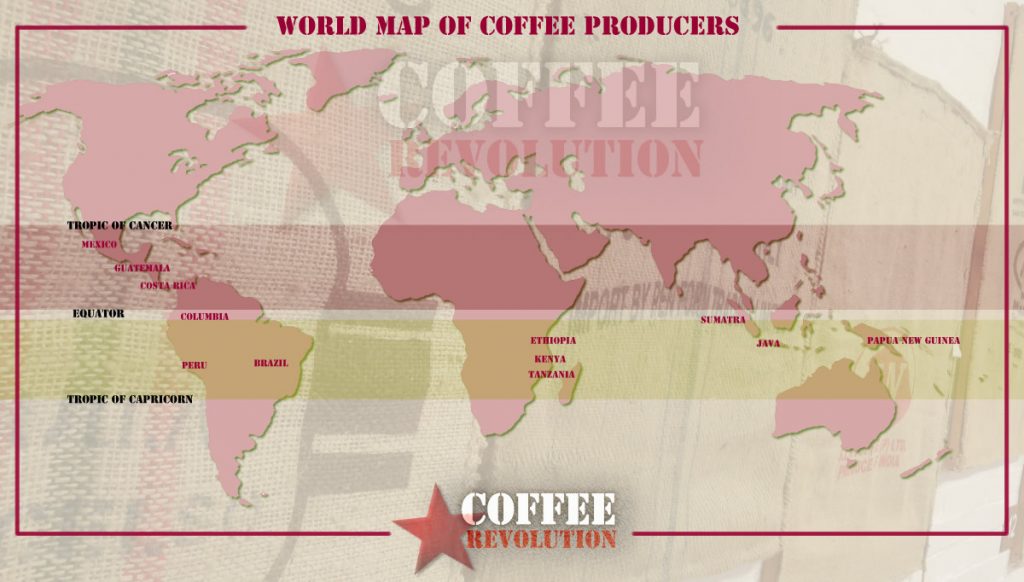Differences between Arabica & Robusta beans
It is not really hard to choose, but they both offer something different. It is common for both Arabica and Robusta varieties of beans to be blended after separate roasting to create a controlled flavour and experience.
Purists will always favour Arabica. Robusta is rarely chosen as a favourite but there are many that prefer the blended Arabica/Robusta with a respective ratio of 80/20 being the most popular.
Robusta is also much cheaper so will often find it’s way into the coffee cup as a budget option.
For a morning cup with a strong caffeine hit and hard coffee taste then a higher ratio of lightly roasted Robusta seems to fit the bill nicely.
Arabica Coffee Beans
The most popular coffee species in the world is Arabica, making up over 59% – 80% of all coffee on Earth.
It originated in what is known as modern day Ethiopia, and has been growing in its population ever since it was first consumed over 3000 years ago.
Arabica coffee is touted as the best coffee, and this fact is used by coffee roasters and companies as a selling point, saying that their coffee is “100% Arabica,” and it works wonderfully.
Where is Arabica coffee grown? It is ideally grown in mild climates, where they can freely grow up to 15 feet, such as that of Guatemala, Ethiopia, and anywhere that lies between the tropics of Cancer and Capricorn *(see the infographic below for more on this).
These regions have an altitude of 1800-3600 feet above sea level, and have varying amounts of rainfall. In areas like Kenya, with a large amount of rainfall, mechanical dryers must be used to dry out the coffee beans after they are picked, as opposed to trying the beans on a patio.
So, what makes Arabica coffee so great? First off, the flavor profile is much smoother and less bitter, with typical flavors including dark chocolate, citrus, and other fruity flavors.
The more subtle flavors of Arabica coffee are more noticeable because there is less caffeine in Arabica beans, which cuts down on the bitterness quite a lot. Because the complex flavor nature of Arabica, it can easily be used in single origin blends to highlight the specific growing region, so for example, a bag of coffee that was entirely grown in Guatemala will still contain all the nuances that a bag of coffee grown in different parts of the world will have.
Sadly, Arabica coffee is not perfect. It is much more susceptible to diseases, such as coffee leaf rust, and the yield of coffee berries is far less compared to Robusta, but hey, quality over quantity. Growing Arabica plants is also more expensive than Robusta, including the additional costs of products meant to keep them disease free.
Despite how amazing Arabica coffee is, the most important part is that you enjoy coffee. There is nothing wrong with not liking Arabica coffee, so go ahead and exercise coffee freedom, and brew whatever makes your tastebuds happy.

Robusta Coffee Beans
Robusta coffee is the second most popular species of coffee grown, and takes up somewhere around 30% of coffee produced in the world. Robusta is known as the cheaper, lower quality, and hyper version of Arabica beans, based off of the plant’s characteristics, and the flavor of the bean itself.
This species of coffee has much more caffeine, which gives it a more bitter taste when brewed. Some would say that Robusta coffee tastes and smells like burnt tires. Personally, my experience with Robusta is not super great. Every time I would drink coffee made with 100% Robusta beans, it turns my stomach.
The Robusta plant itself is, well, quite robust, being able to resist diseases, such as coffee leaf rust, much easier. These plants can be grown pretty much anywhere, as long as they are watered and provided some sort of sunlight.
Some of the pros of Robusta coffee would be that it is cheaper to grow and process, the plants have a much higher yield, and it is cheaper to buy for the consumer. Though, these pros do come with some hefty cons, such as the lack of a developed flavor, and higher acid content.
Of course Robusta plants can yield high quality beans, but most coffee does not contain these higher quality beans. A lot of cafes will use an espresso blend with a certain percentage of high quality Robusta coffee beans mixed in with the Arabica coffee beans, for a better development of crema in the espresso shot.
So are Robusta or Arabica coffee beans better?
We would have to conclude that Arabica coffee beans are the best. The wide variety of flavors and choice of regions present a massive selection to choose from. The Coffee Revolution constantly favor coffee made from 100% Arabica beans. There are also a few 80% Arabica 20% Robusta which feature well in our favourites. But we have yet to try a coffee with more than 20% Robusta which we particularly enjoyed.

